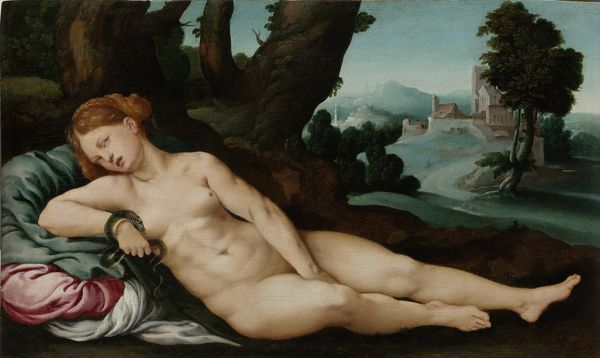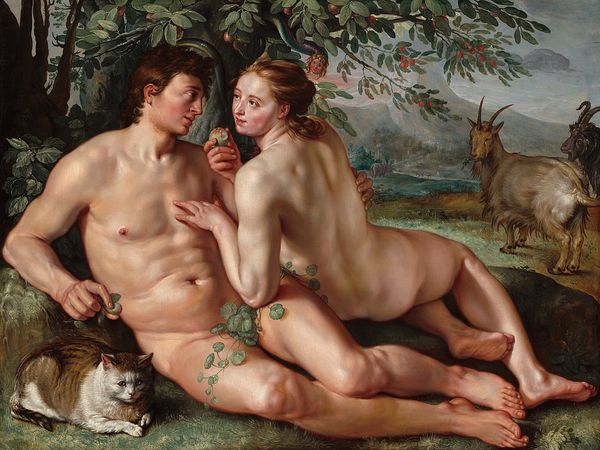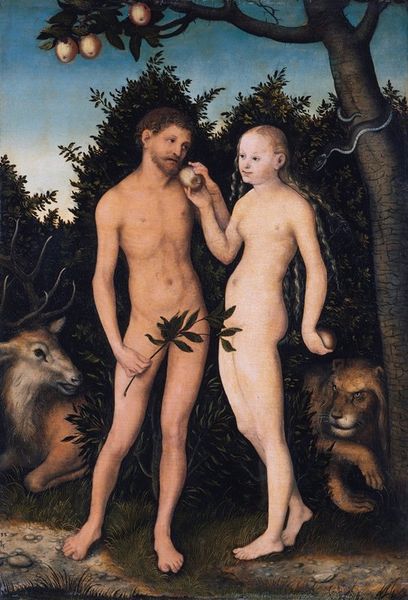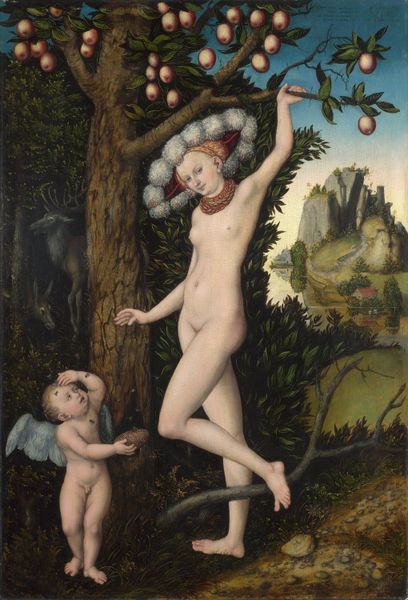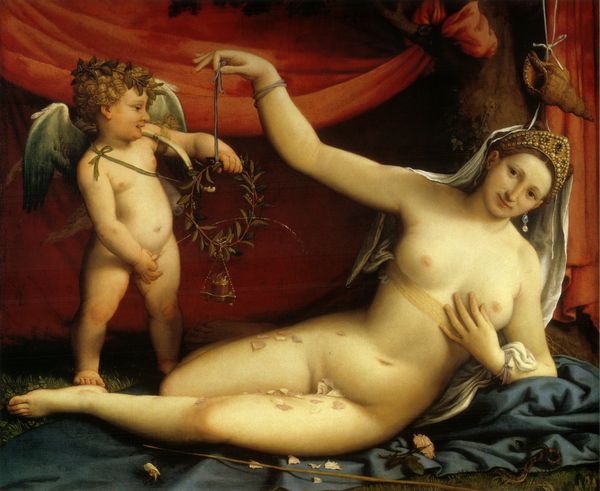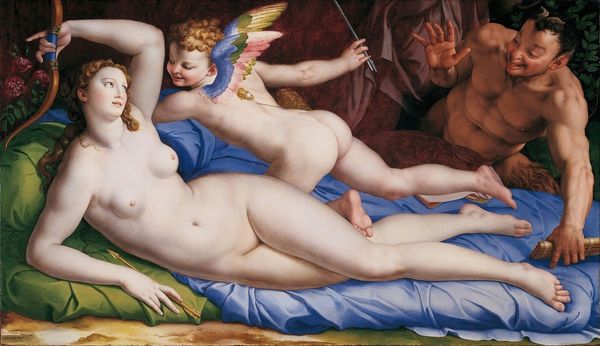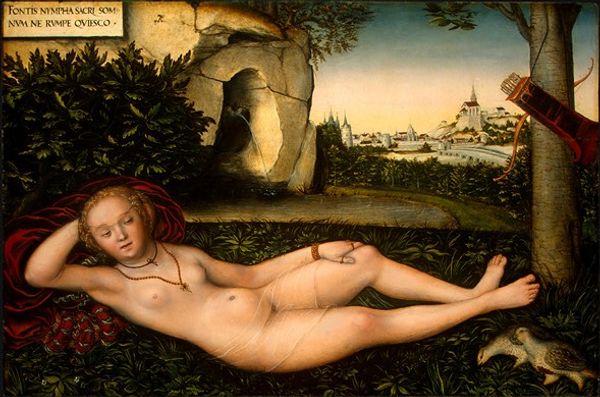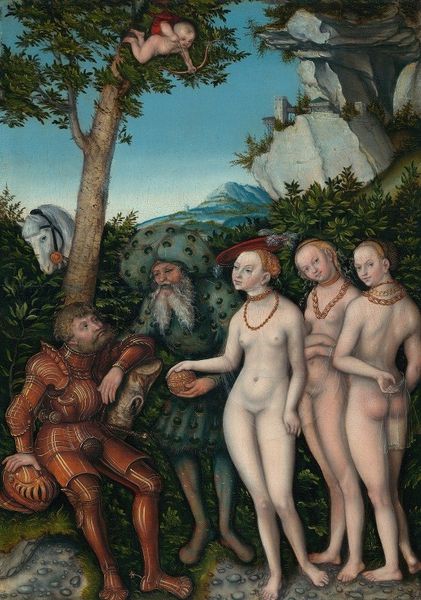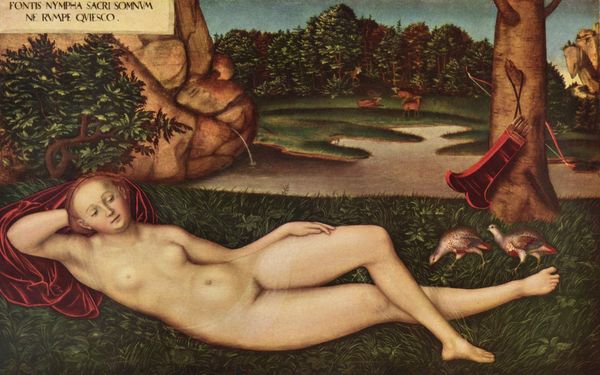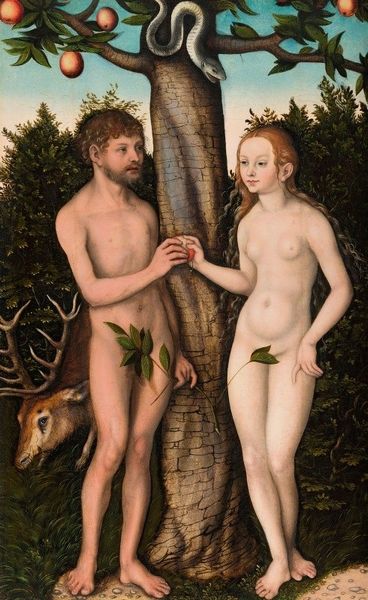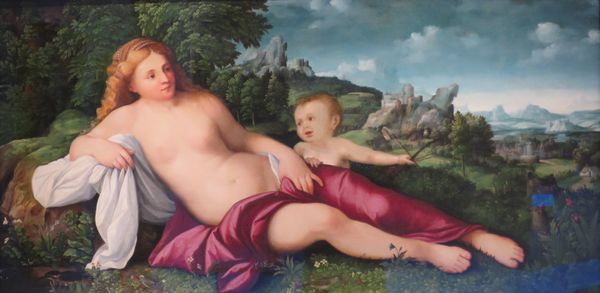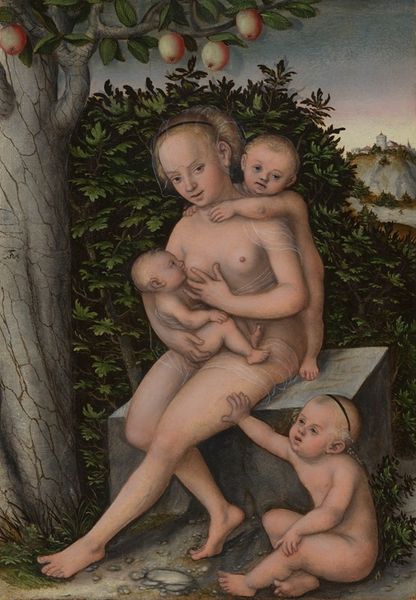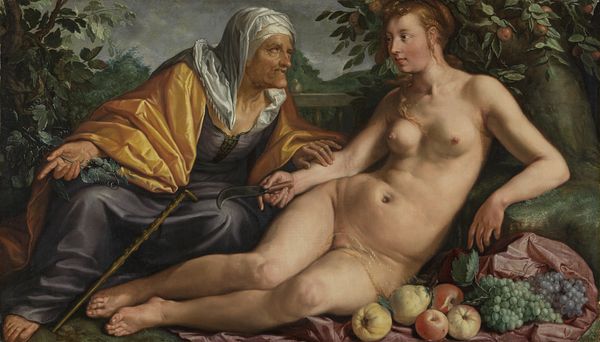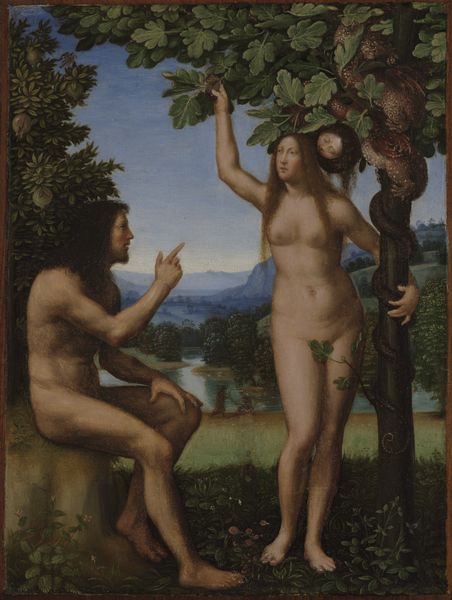
oil-paint
#
allegory
#
oil-paint
#
figuration
#
11_renaissance
#
oil painting
#
female-nude
#
mythology
#
northern-renaissance
#
nude
#
male-nude
Copyright: Public domain
Curator: Alright, let’s discuss Albrecht Altdorfer’s “Lot and his Daughter” from 1537. The work, rendered in oil paint, currently resides in the Kunsthistorisches Museum in Vienna. Editor: My first impression is that it's a rather unsettling composition. The way the figures are intertwined feels…claustrophobic, almost suffocating despite the implied narrative of escape from the burning city in the background. Curator: Indeed. From a formal perspective, the painting presents a striking contrast. We have the foreground dominated by the figures, arranged with a focus on idealized forms—particularly in Lot’s daughter. Yet, this foreground gives way to the cataclysmic depiction of Sodom in the background. Editor: That burning city is rendered with such palpable energy and detail, it practically overshadows the figures. I’m struck by the labor and resource extraction involved in producing those pigments, then seeing that effort used to illustrate destruction and moral decay. Was Altdorfer making a statement about labor, or were there specific pigments he favored for symbolic reasons? Curator: The red hues certainly draw the eye, emphasizing themes of destruction, passion, and sin. The artist clearly employed sophisticated glazing techniques to build up these luminous, yet menacing effects. The work's texture hints at layered narratives both material and allegorical. Editor: Yes, but how might the painting’s creation relate to the socio-economic landscape of its time? What about Altdorfer’s access to specific pigments, and his social standing as it influenced material choices and production? That opulent green fabric enveloping Lot, where did it originate and how was it produced? Was it made by women laborers or did it take advantage of exploited communities? Curator: It's difficult to make conclusive connections, but this opulence invites contemplation on the artist's skill in translating textures through paint. Note also the treatment of Lot's face. Wrinkles, age spots—marks of the character that draw the viewer’s gaze from the landscape. It speaks to both a level of representational skill and the overall thematic tension of salvation and debauchery. Editor: Ultimately, both the artist's technique and his patrons have impacted the cultural understanding of "Lot and his Daughter." What would a Marxist art historian make of the materials chosen? This piece seems to echo wealth while critiquing decadence, making its art production history equally significant. Curator: Agreed. Considering the interplay of skill, narrative, and available resources definitely provides layers of readings and understandings about “Lot and his Daughter". Editor: Absolutely. There are always further layers of discussion needed to reveal any kind of ultimate "truth".
Comments
No comments
Be the first to comment and join the conversation on the ultimate creative platform.
